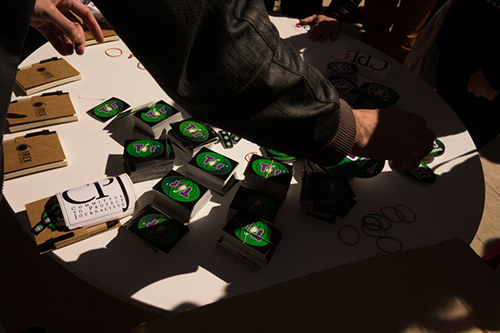Last week, the Committee to Protect Journalists’ Internet Advocacy team was in Valencia, Spain, for the first Circumvention Tech Festival: a mashup of journalists, activists, technologists, and human rights defenders united by a desire to fight censorship and surveillance. More than 500 registered participants from 40 countries shared their skills, strategies, and experiences in combating these global challenges.
The festival is part of a larger effort by CPJ–led by its Internet team and involving the work of all staff–to protect journalists during one of the most dangerous times for the press, with CPJ research showing high numbers of journalists being killed or imprisoned because of their work. Technology enables unprecedented access to information and publishing platforms for journalists, but at the same time generates multiple threats. Physical, technological, and psychosocial harm–from kidnapping and hacking to post-traumatic stress disorder–require a holistic and proactive response, and CPJ is deeply engaged in the fight.
For example, CPJ recently helped establish a set of global safety principles and practices for freelancers. CPJ Deputy Director Robert Mahoney aptly described them in a blog as “a moral commitment on the part of news organizations to treat freelancers fairly, while freelancers undertake to prepare themselves fully before embarking on dangerous assignments.” CPJ has updated its Journalist Security Guide, which since 2012 has served as a go-to resource for journalists seeking to protect themselves and their sources. We are engaged with governments and companies, most recently via a joint letter submitted to the United Nations Special Rapporteur for freedom of expression, David Kaye, urging him to ensure that countries such as Ethiopia, where nine bloggers are accused of receiving encryption training, and the U.S. and U.K., where authorities have called for unworkable technical backdoors, cannot criminalize or sabotage tools that are crucial to protecting the well-established rights of private communication and association, both of which are vital to journalism.
We have also embarked on a two-year project, in partnership with the Stanford Center for Internet and Society, to study journalists’ practices and perceptions about digital security across the world, and plan to use the data to shape our work in preventing attacks on journalists. Later this year CPJ will host an invitation-only summit, “Teching the Lede: Leveraging Technology to Protect Journalists Worldwide,” which will focus on simple but powerful solutions that technology companies and news organizations can implement to help remove the burden of technological security from journalists and place it where it belongs: in the newsroom and journalism schools.
CPJ is building, participating in, and strengthening coalitions such as those forged and reinforced at the Circumvention Tech Festival. Illustrative of the breadth of this movement is the array of organizations and individuals who came together to help host and run the festival. A Trainers Summit, the annual Iran Cyber Dialogue, the Tor development meeting, and workshops in English and Spanish were held. CPJ, along with the human rights and social justice organizations IREX, ASL19, Open Technology Institute, Internews, Aspiration Tech and Renewable Freedom Foundation; organizations that produce anonymity tools such as the Tor Project and Psiphon; journalism organizations the European Journalism Center and Unió de Periodistes Valencians; and the Las Naves community hub were all involved in running the festival.
In addition to the conversations CPJ’s Internet team had with other delegates, our primary contribution was the “JournoSec in the Newsroom” event, a series of back-to-back workshops in partnership with IREX and the European Journalism Center, which were held in Spanish and English. Each session focused on principles for creating newsrooms that incorporate more sustainable measures for journalist safety and source protection than the current ad hoc methods that rely on journalists taking steps to protect themselves.
Central to these discussions were ethics of relationships in the newsgathering process: the responsibilities of news organizations to staff and freelancers, what journalists owe their sources, and how publications can protect their readers. These questions sparked vibrant conversations about robust security practices, how to protect sources when they reach out to you and you reach out to them, and how newsrooms can build cultures and processes that provide safety by default to journalists and sources alike.
Attacks on journalists no longer require carefully planned surveillance strategies or high-risk attacks. Censorship and spying–and thus repression–can now be delivered wholesale. As such, CPJ is similarly scaling its efforts to protect journalists and prevent fewer tragedies.
It is a fight we are proud to be part of.
